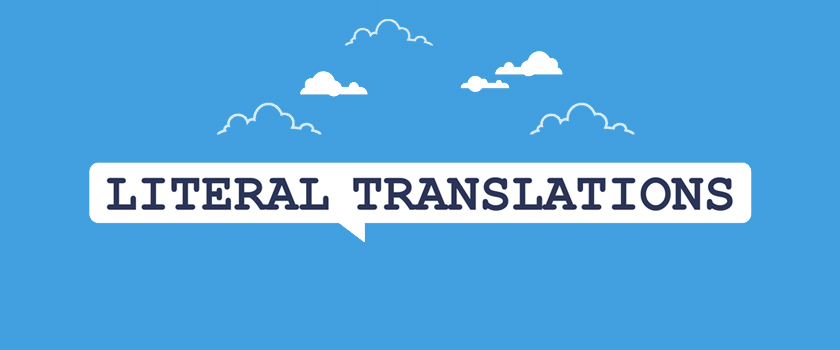Literal Translation
Literal translation is a very common and important method to translate product manuals. Literal translation refers to translate a sentence originally, to keep the original message form, including sentence structures, meaning of the original words, and artistic devices and so on.
Though different countries have different cultures, there are still some similarities among them(范晔,2008). This characteristic makes literal translation possible and the target text can successfully express the meaning of the original text. If things described in the source text correspond with the same things in the target text, literal translation is the best way to achieve the translation purpose.
Each language has a lot of internal information that the native can perceive without much explanation with their linguistic and cultural background. But no receptors of a translation can understand the same background information as natives.
Therefore, if a literal translation is insufficient to fill out all the internal information or the function of the original message, a change of translation method is necessary. But if a literal translation is sufficient to convey the internal information, this method is better.
Since the translation of manuals is usually more literal, mechanical, automatic and humdrum with same intentions of the author of the source text, literal translation can fulfill the intended functions of manual translation. For example:
③Source text: This press is mainly suitable for cold working operations, such as punching blanking, bending, shallowdrawing, cutting and so on.
Translated text:本冲床主要用于冷冲工艺, 如冲孔、 落料、 弯曲、 浅拉伸、 剪切等。
The components of the source text are equivalent with the target text, and their positions are equivalent too. The translated text is equivalent to the source text from word to grammar. “Cold working operations” corresponds “冷冲工艺”, “punching blanking, bending, shallowdrawing, cutting” corresponds respectively “冲孔、 落料、 弯曲、 浅拉伸、 剪切”. The method helps to preserve the original flavor and make the translation more proper and accurate. Even some long and complex sentence can be translated by literal translation. Please read the manual:
④Source text: The fan belt tension should be often checked in the following way: pressing the belt with 70-100N force to see if its deflection is with the specified value.
Translated text: 请经常用下面的方法检查风扇皮带的松紧度:用70-100牛的力向下按皮带, 确认误差是否在规定范围内。
Read Also: Some Kinds of Misunderstanding between Literal Translation
In this example,two pairs of equivalent collocations are found, “its deflection”,“它(皮带)的误差”, “specified value”,“规定范围”.The translated version should be faithful to the source text, but the major purpose of manual translation is not to record the grammar and word of the source language for linguistic research, and on the contrary, its purpose is to convey product information to target readers. Therefore, literal translation based on collocations is more suitable.
In a word, the translation approach acts like a mirror, reflecting almost everything of the original in the version. It helps the translator keep both the original form and content in the version. Therefore it is most widely applicable in product manual translation because product manuals demands accuracy, conciseness and authenticity.



